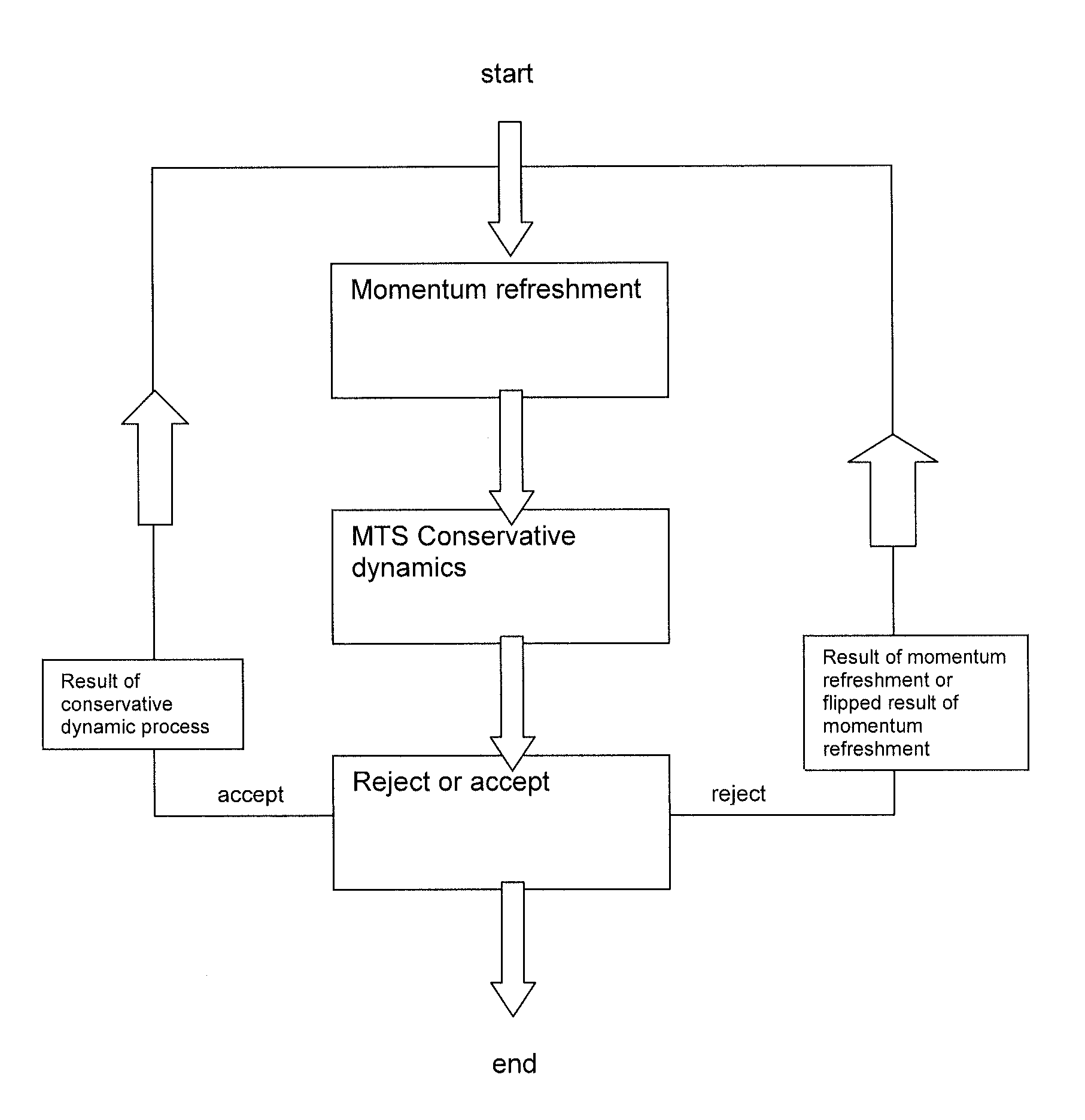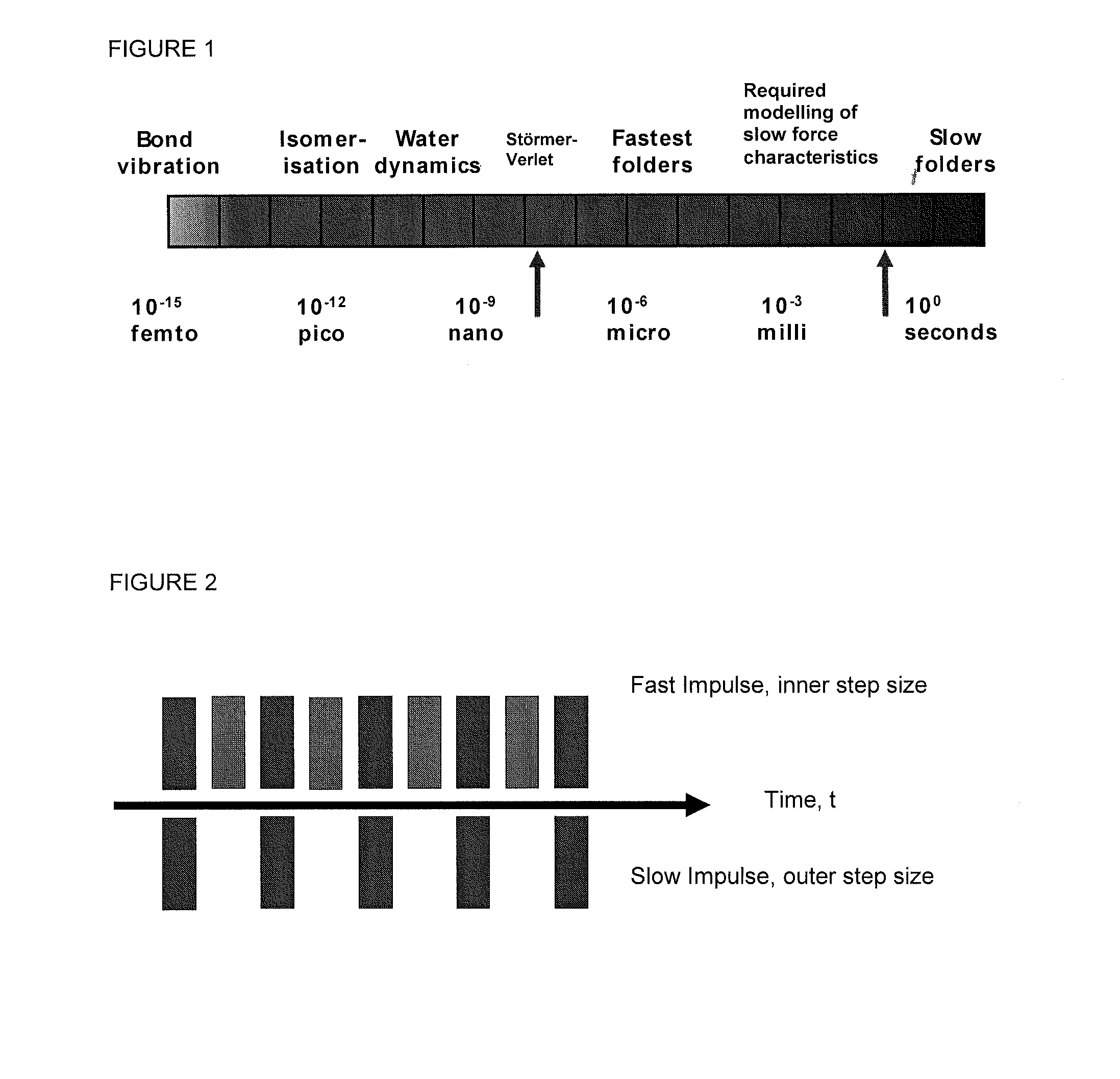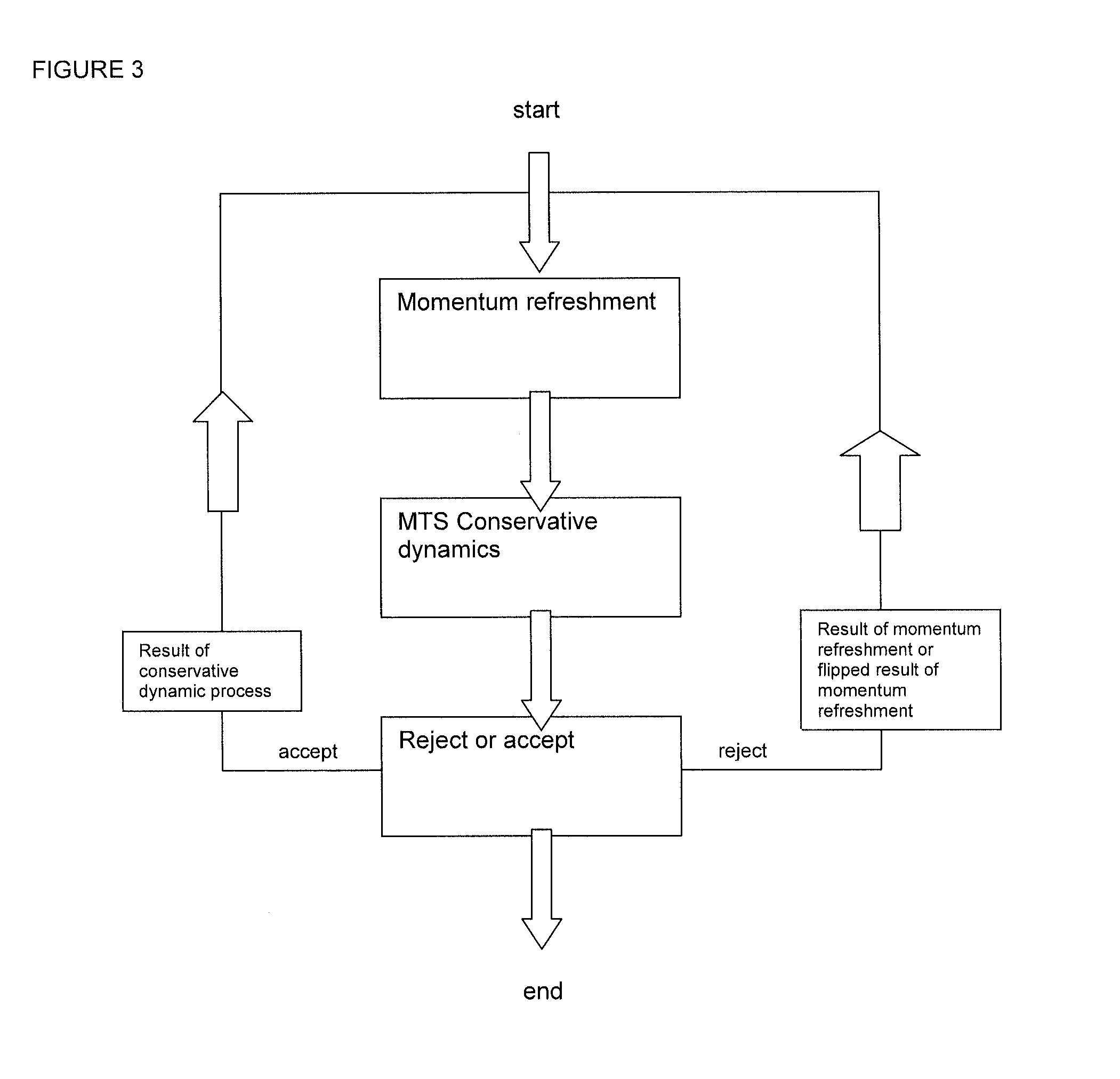Method, apparatus and computer program for multiple time stepping simulation of a thermodynamic system
a thermodynamic system and simulation technology, applied in the field of thermodynamic system simulation, can solve the problems of inability to solve problems beyond experimentation, inability to accurately simulate macromolecules, and inability to achieve simulation results
- Summary
- Abstract
- Description
- Claims
- Application Information
AI Technical Summary
Benefits of technology
Problems solved by technology
Method used
Image
Examples
Embodiment Construction
[0053]FIG. 3 shows an outline embodiment of the invention. There is a momentum refreshment process, followed by an MTS conservative dynamics process and then the results are tested. If they are accepted, the test procedure returns the results as is; if they are rejected the test procedure returns the state after the momentum refreshment process, with or without a momentum flip. The entire method can be repeated.
[0054]The following sections are directed to the mathematical derivation and application of the MTS GHMC method.
Problem Statement and Proposed Methodology
[0055]Molecular dynamics (MD) requires the solution of Newton's equations of motion for a classical unconstrained simulation
[0056]Mⅆ2ⅆt2X=-∇U(X),(1)
where M is a diagonal mass matrix of atomic masses, X is the collective atomic position vector, U is the potential energy, typically given by
U=Ubonded+Unonbonded, (2)
Ubonded=Ubond+Uangle+Udihedral+Uimproper, (3)
Unonbonded=ULennard-Jones+Uelectrostatics, (4)
and the gradient ...
PUM
 Login to View More
Login to View More Abstract
Description
Claims
Application Information
 Login to View More
Login to View More - R&D
- Intellectual Property
- Life Sciences
- Materials
- Tech Scout
- Unparalleled Data Quality
- Higher Quality Content
- 60% Fewer Hallucinations
Browse by: Latest US Patents, China's latest patents, Technical Efficacy Thesaurus, Application Domain, Technology Topic, Popular Technical Reports.
© 2025 PatSnap. All rights reserved.Legal|Privacy policy|Modern Slavery Act Transparency Statement|Sitemap|About US| Contact US: help@patsnap.com



